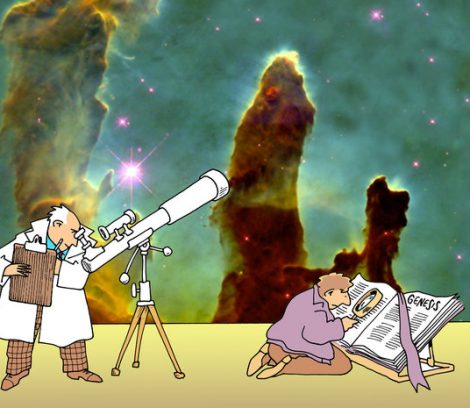
The Doubting Thomas in All of Us
From a Judeo-Christian perspective, you can’t ignore the Bible if you write about God and religion. For believers, after all, the Bible is the Word of God in the words of humans.
And one of my favorite Scripture passages was read at Mass during this time after Easter. It’s the story of the Apostle Thomas who, when told that Jesus had risen from the grave, said, in so many words, “Yeh, right.”
How could you not relate to Thomas’ doubt? Who could believe such a thing? Even in Jesus’ time, the resurrection challenged everything we know about life and death. I’m sure Thomas’ view was shared by other apostles who, perhaps, didn’t have the courage to say so.
I Will Not Believe
“Unless I see in his hands the print of the nails,” said Thomas, “and place my finger in the mark of the nails, and place my hand in his side, I will not believe.”
Thomas, whose Greek name is Didymos, or twin, is mentioned only a few times in the New Testament. He was evidently impetuous and courageous but not necessarily astute. Having misunderstood when Jesus told his disciples that his friend, Lazarus, had died and that they should all “go to him,” Thomas thought that meant go to him in death. And Thomas replied, “Let us also go, that we may die with him.”
But because Thomas expressed doubts about the resurrection – doubts that any rational person would have – he’s always referred to as “the doubting Thomas.”
That’s true even though he subsequently redeemed himself in the gospel. Jesus showed up again eight days later, according to John’s gospel, and went right for Thomas.
“Put your finger here and see my hands,” Jesus said; “and put your hand and place it into my side; do not be faithless, but believing.” Thomas answered, “My Lord and my God.” Jesus responded, “Have you believed because you have seen me? Blessed are those who have not seen me and yet believe.”
Had to Take the Apostles’ Word
The gospel writers, who knew Jesus or were close to those who did, were undoubtedly thinking about the thousands of new members of the church of their time who had to take the apostles’ word. But by extension, Jesus was talking about us.
But what does it mean to believe?
It doesn’t mean having certainty, that’s for sure. As with belief in anything, it exists alongside doubt. That’s why it’s called faith. But it is rational because there are good reasons for believing – like the millions of witnesses who believe, the historicity of the New Testament, the apparent “wiring” humans have for faith and despite anomalies, the beauty and order in the universe.
But in my opinion you can’t think your way to God. It requires an intellectual assent, but much more.
“…If I have all faith so as to move mountains but do not have love, I am nothing,” writes Paul in his first letter to the Christians at Corinth. So, it seems, love precedes and trumps faith, the development of which seldom occurs overnight.
Reliable Road to Belief
I recently learned of a relative – a young woman who I presumed to have no interest in faith or its activities – who regularly helps a Catholic parish group who serves meals to the homeless. That kind of love, I believe, is a reliable road to belief.
Tomas Halik, the Czech philosopher and theologian, wrote a great book called Patience with God, which I’ve often quoted. I especially like this brief description of Halik’s idea of faith by Ben Myers on the web site Faith and Theology.
“His argument is that the real difference between faith and atheism is patience. Atheists are not wrong, only impatient. They want to resolve doubt instead of enduring it…. Faith is not a denial of all this: it is a patient endurance of the ambiguity of the world and the experience of God’s absence.
“… As Adel Bestavros puts it (in the book’s epigraph): “Patience with others is love; patience with self is hope; patience with God is faith.’”




